Total lunar eclipse
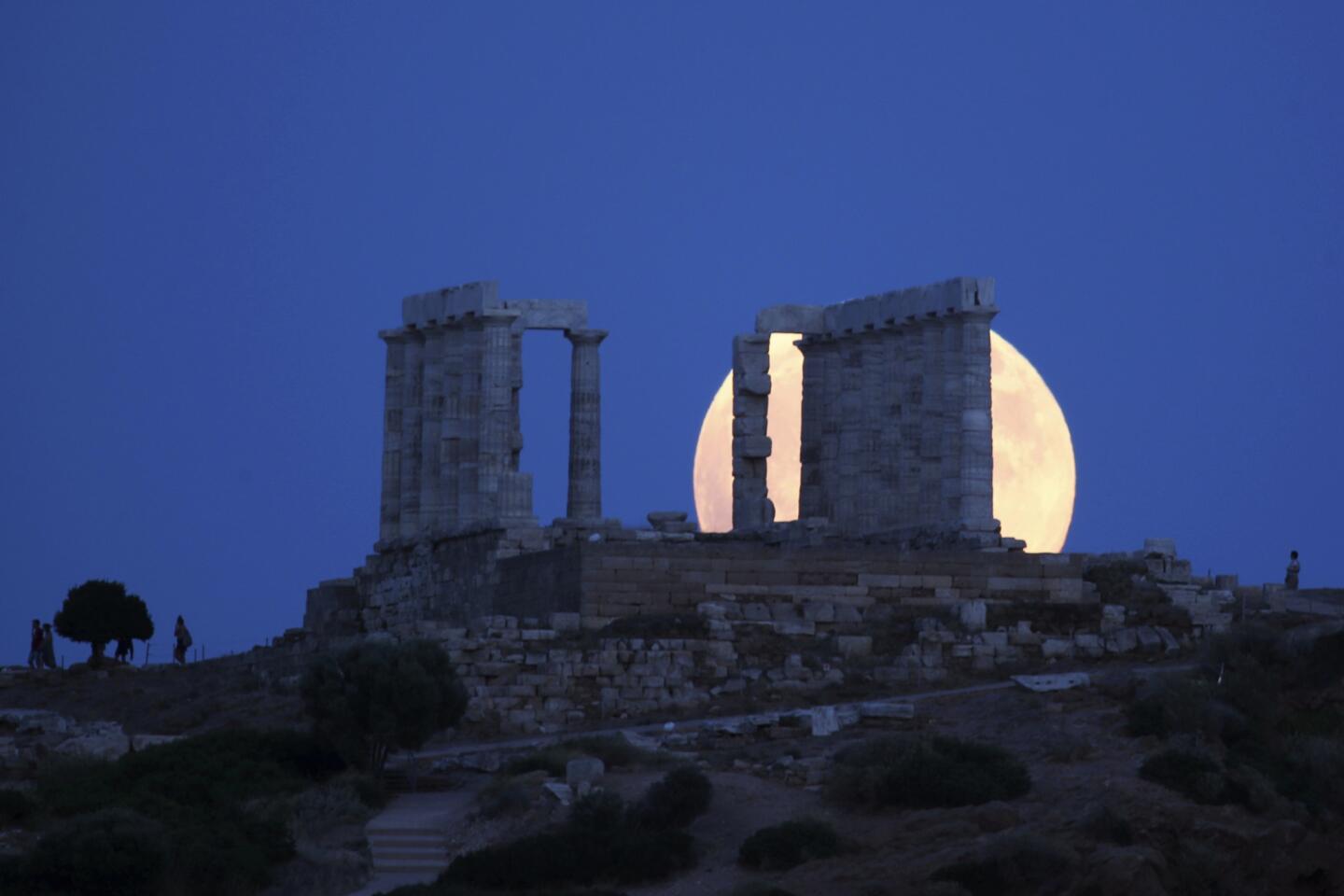
A full moon rises behind the ancient temple of Poseidon in cape Sounio, south of Athens. The complete lunar eclipse Friday when the sun, Earth and moon line up perfectly to cast Earth’s shadow on the moon, will be the longest this century. It’s called a “blood moon” because it turns a deep red and will be visible at different times around the world.
(Thanassis Stavrakis / Associated Press)The eclipse will be visible mainly in Europe, Africa, Asia and Australasia, as well as some parts of South America.
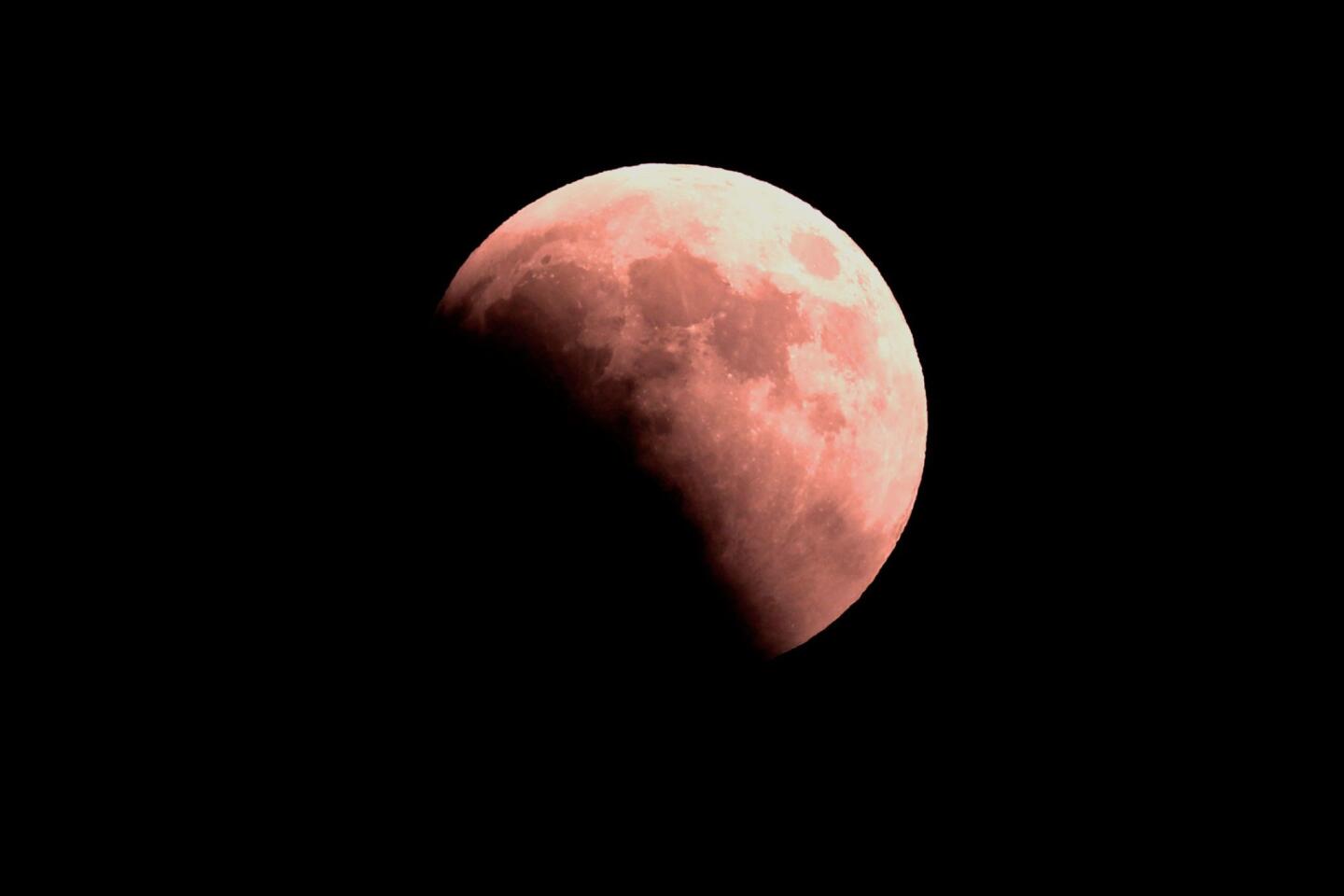
The moon during the total lunar eclipse taken from the Israeli Mediterranean coastal city of Netanya.
(JACK GUEZ / AFP/Getty Images)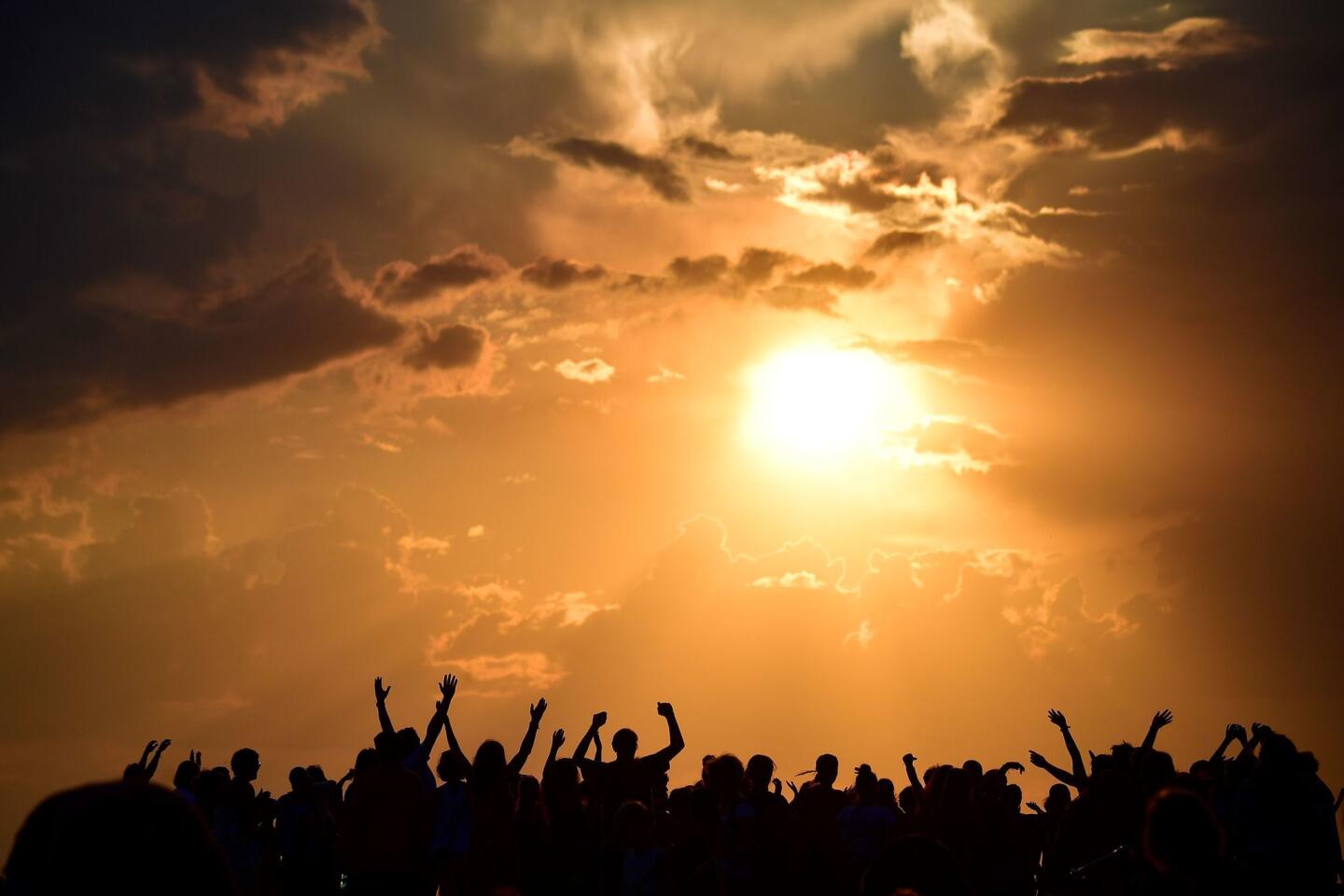
People gather as they wait for the sun to go down and the appearance of the ‘Blood moon’ in Berlin.
(TOBIAS SCHWARZ / AFP/Getty Images)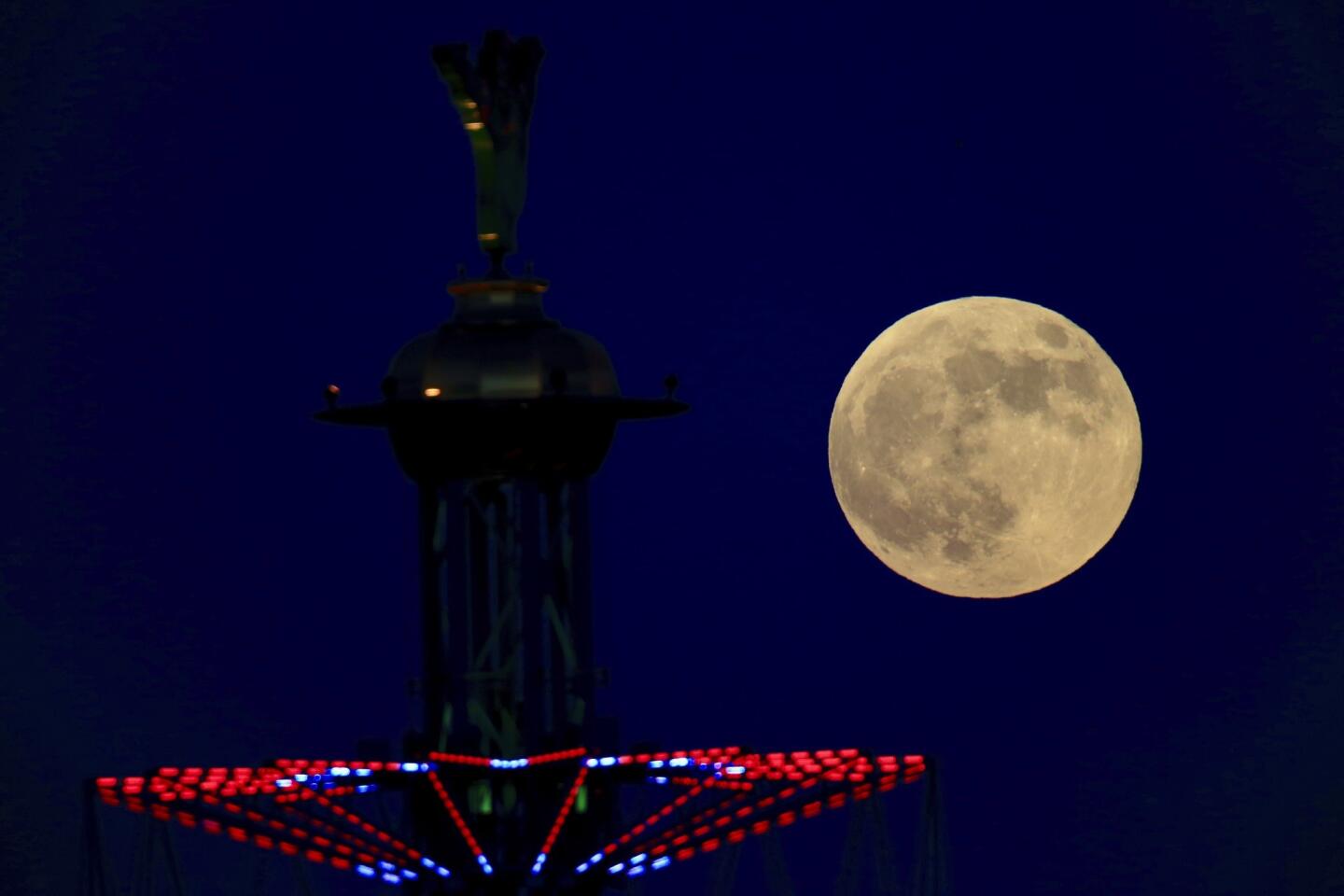
A blood moon rises over Tel Aviv, Israel.
(Ariel Schalit / Associated Press)Advertisement
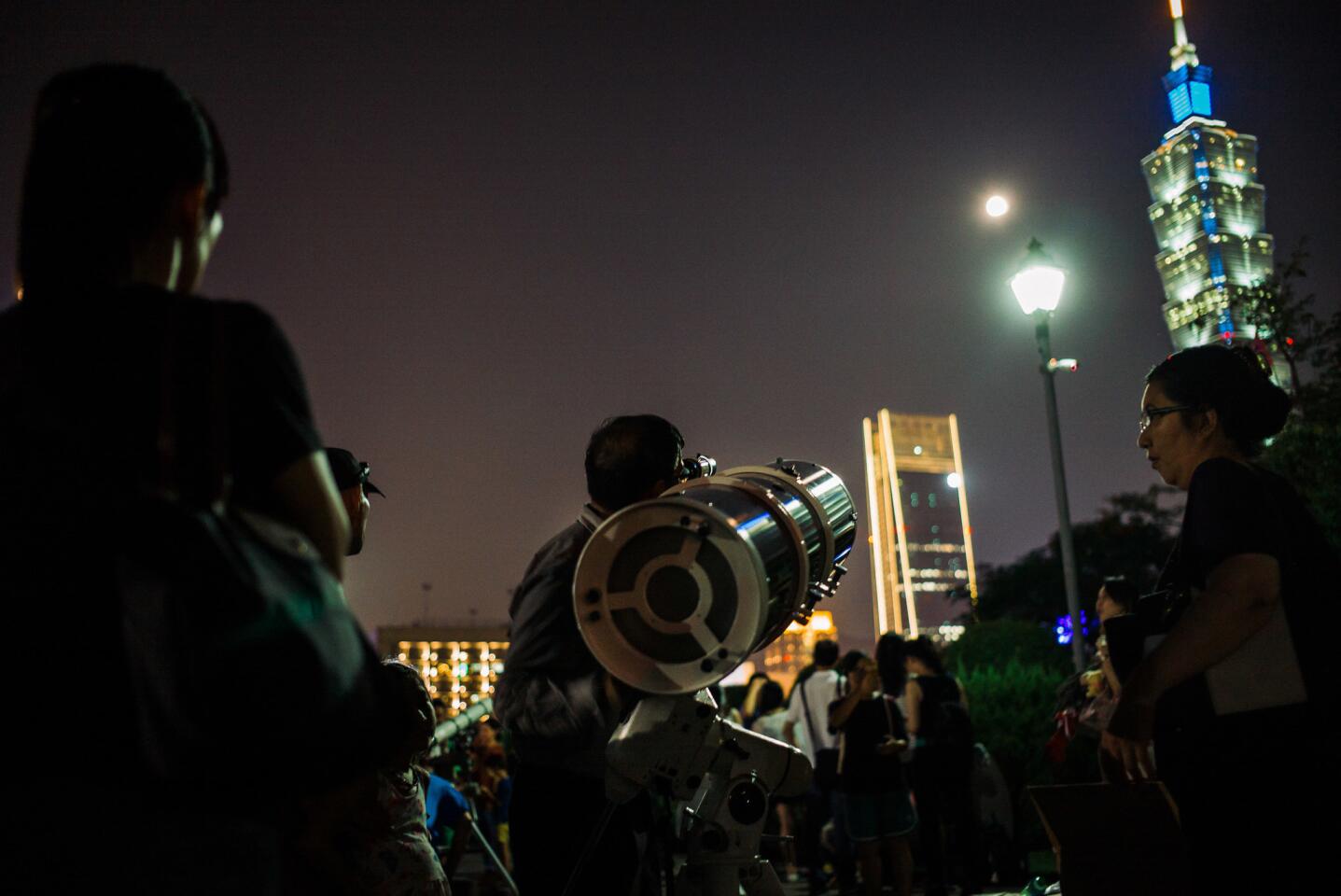
People set up telescopes to witness a rare lunar eclipse near National Sun Yat-sen Memorial Hall in Taipei, Taiwan.
(Billy H.C. Kwok / Getty Images)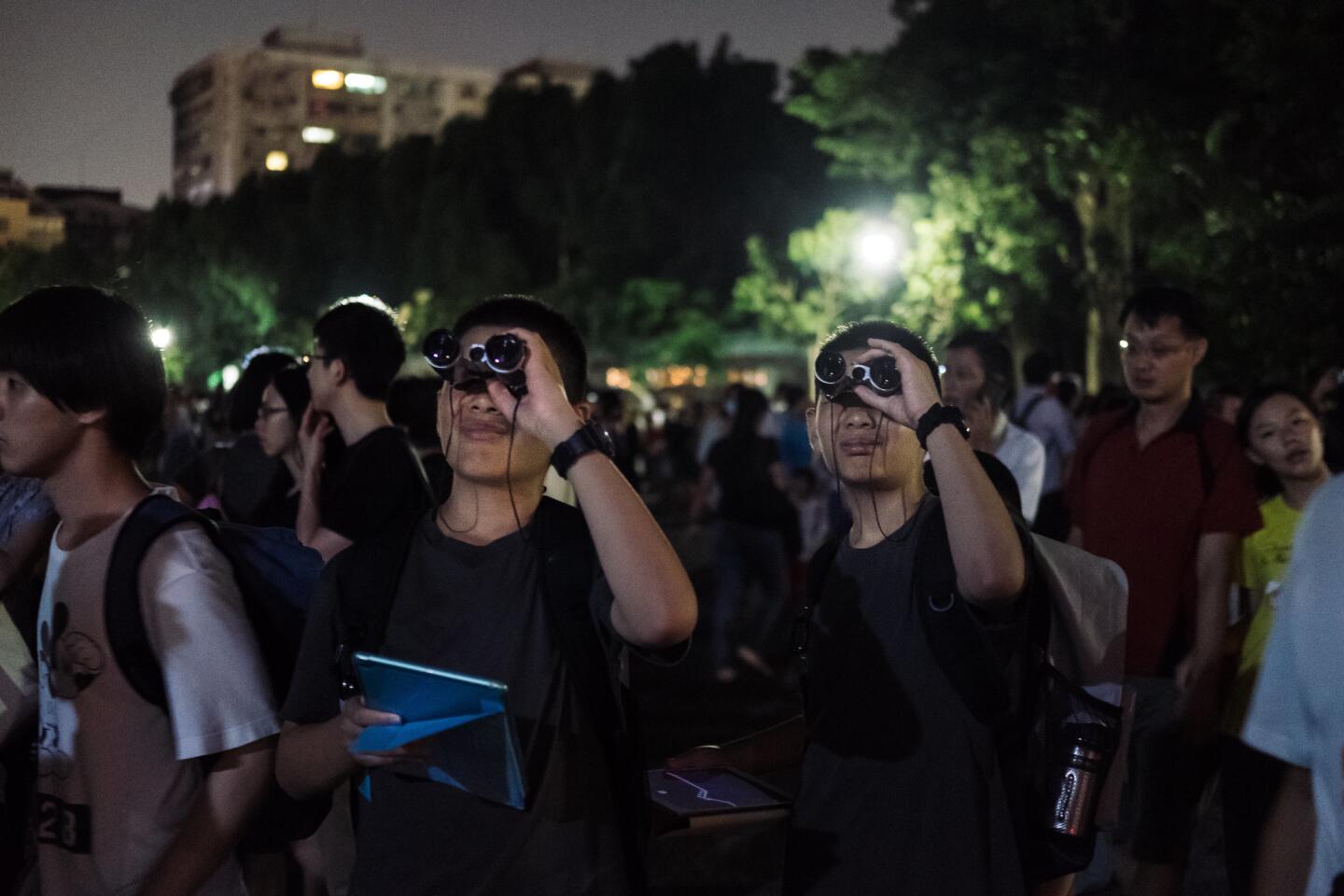
People use binoculars to watch a rare lunar eclipse in Taipei, Taiwan.
(Billy H.C. Kwok / Getty Images)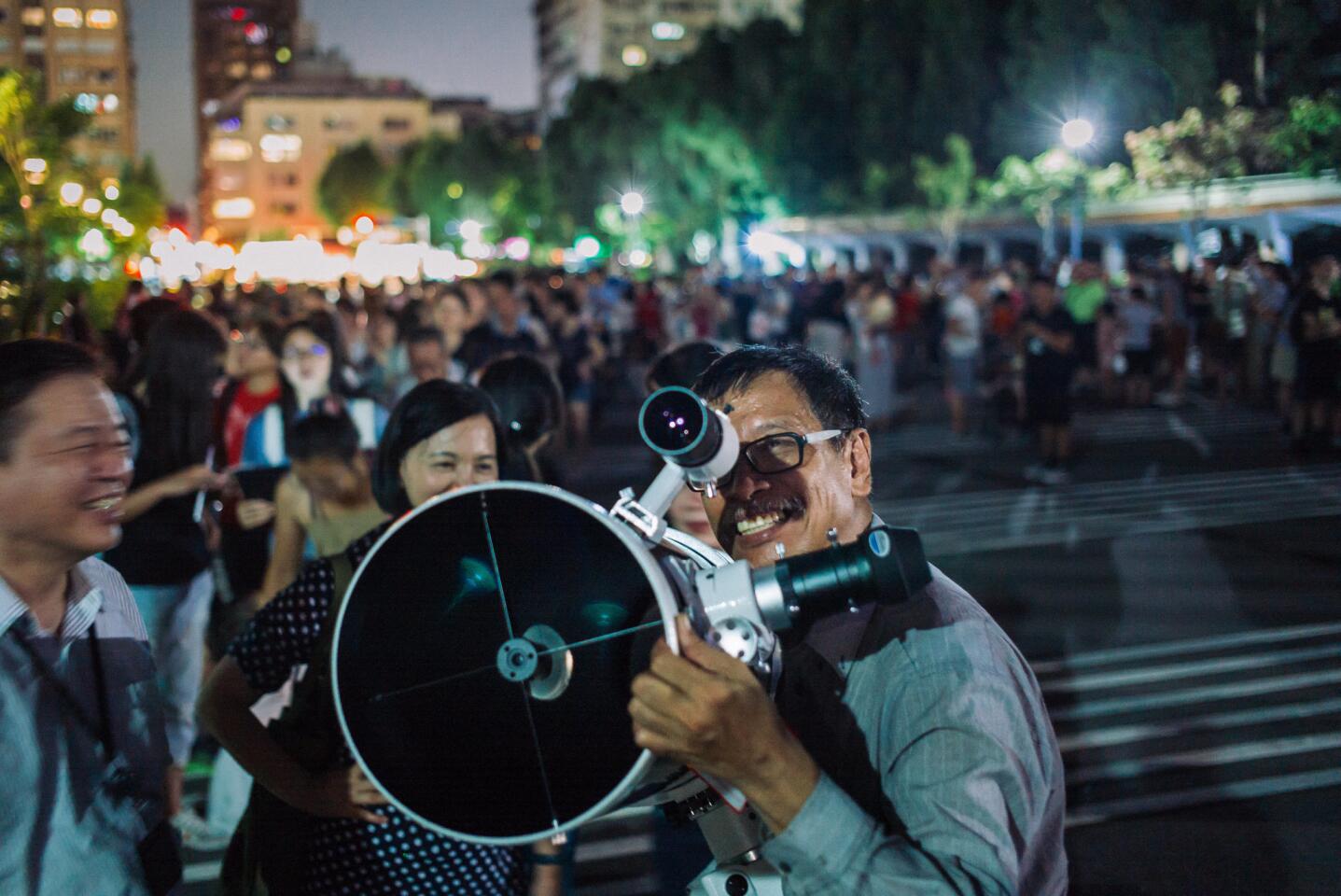
People set up telescopes to witness a lunar eclipse in Taipei, Taiwan.
(Billy H.C. Kwok / Getty Images)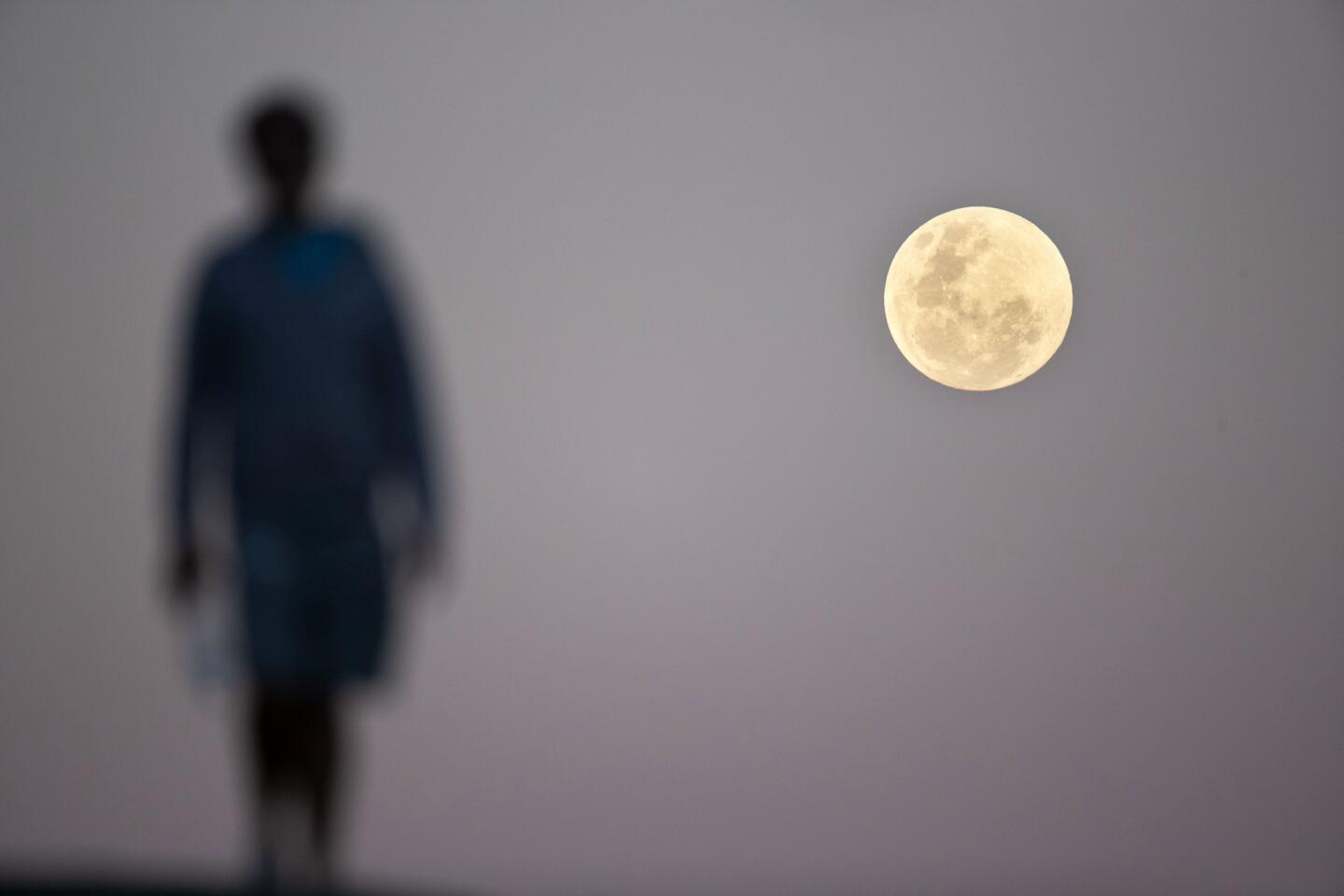
The full moon rises near Bondi Beach ahead of a total lunar eclipse in Sydney. The period of totality during this eclipse, when Earth’s shadow is directly across the moon and it is at its reddest, will last 1 hour, 42 minutes and 57 seconds, making it the longest viewable lunar eclipse this century.
(Brook Mitchell / Getty Images)


